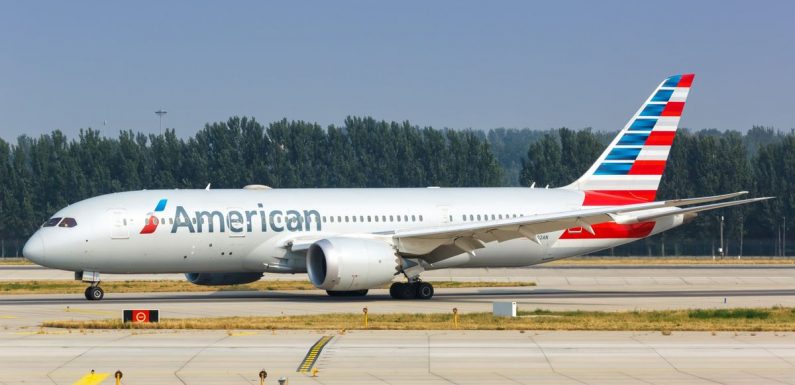
Stringent pandemic-era flight restrictions are delaying any substantial resumption of travel between the U.S. and China, despite China’s reopening for inbound and outbound travel in January.
One result: United in mid-February slashed nearly 1,400 China flights from its preliminary March through August schedule, Cirium data shows.
But even though airlines brought approximately 2.9 million Chinese travelers to the U.S. in 2019, there are indications that U.S. carriers aren’t supportive of a full return to the relatively liberal U.S.-China air service rules. In an emailed statement, Airlines for America (A4A), which counts United, Delta and American among its members, said it “believes the reopening of the U.S.-China market should ensure all airlines in the marketplace have a fair and equal opportunity to compete,” a sign that it wants to see China flight resumption under new terms.
Currently, airlines from each country are limited to 12 combined weekly flights in the U.S.-China market. For U.S. carriers, the rules mean that the Big Three can each offer just four roundtrip flights to China per week.
The allowance of 24 weekly flights between the two economic giants differs sharply from prepandemic rules allowing for 161 combined weekly frequencies between the U.S. and Beijing, Shanghai and Guangzhou plus unlimited flights between the U.S. and other parts of China.
In March 2019, nine U.S. and Chinese airlines flew a combined 1,460 frequencies between the countries on 61 routes. This March, eight airlines are scheduled to connect the two countries with just 96 roundtrips on 11 routes.
Scheduled seats in the U.S.-China market remain down 93% compared to March 2019, according to Cirium.
The flight restrictions are a holdover from a diplomatic dispute between the countries over air travel early in the pandemic.
At one point in spring 2020, China had effectively banned U.S. airline flights as part of its zero-Covid policy, while the U.S. was threatening to impose a similar ban in response. Further dust-ups occurred over the course of the pandemic, some a result of a China policy of imposing flight suspensions on foreign airlines as punishment for passengers testing positive for Covid after arrival.
Now, despite both countries having eliminated most Covid travel restrictions, the path toward resuming pre-Covid air service rules remains uncertain.
A4A didn’t elaborate on its statement about ensuring fair competition. However, one source close to the situation said that Russian overflying is one cause of concern. While U.S.-based carriers aren’t allowed to overfly Russian airspace due to Russia’s war against Ukraine, China is imposing no such restriction on its airlines, saving them 45 minutes to an hour on routes from the West Coast to Shanghai and Beijing, said the source. If U.S. airlines were to resume flights from the East Coast, avoiding Russian airspace would add more than two hours of flying.
Several rounds of consultations have taken place between the DOT and Chinese authorities over flight resumptions, said the source, who asked to remain anonymous due to the sensitivity of the matter, with Chinese representatives pushing for a resumption of the pre-Covid regime, while the DOT has dug in its heels. The DOT did not respond to inquiries for this story.
For now, with flight numbers steeply limited, airfares to China are high. Nonstop Delta flights between Detroit and Shanghai in early April cost at least $3,373, to give one example. Steve Saxon, a McKinsey partner and leader of the consulting firm’s Asia travel practice, said there are a variety of commercial reasons that could diminish the desire of U.S. carriers to build back quickly in China.
For one, he said, the airlines had committed their aircraft elsewhere before China’s sudden reversal of its zero-Covid policy in January. Uncertain demand prospects in comparison to prepandemic times could also be a concern.
“China never made lots of money for U.S. carriers,” Saxon said. “They were there strategically, wanting to position themselves for the future.”
Also, while U.S. airlines likely lack the aircraft for a fast China buildup, especially considering the higher priority they place on Europe, Saxon said Chinese carriers don’t have a similar dynamic relating to resuming U.S. service. Chinese carriers stored few planes during the pandemic and have 240 widebodies ready to allocate, he said. In addition, 90% of Chinese airline workers retained their jobs through the pandemic.
Source: Read Full Article









